Each year the Oxford Dictionary chooses a “Word of the Year.” Last year the Word of the Year was “Post-truth.” Ever hear of that word? I hadn’t. Yet, it was the Word of the Year. According to the folks at the Oxford Dictionary, its use increased by 2000 percent over the previous year.
Here is the Oxford Dictionary’s definition of Post-truth: “Relating to or denoting circumstances in which objective facts are less influential in shaping public opinion than appeals to emotion and personal belief.”
I may not have heard of the word, “post-truth” before, but I have certainly experienced people who wittingly or unwittingly have embraced it in both the realms of politics and religion. Objective facts seem to mean less and less to more and more people, even professed Christians, and decisions are becoming more often made on the basis “appeals to emotion and personal belief” than on “objective facts.”
Let’s look at the realm of religion for a moment. I am often in discussions with conservative and traditional-minded Roman Catholics. Sadly, they are in a constant state of agitation, anger and sorrow over the state of the Roman Catholic Church, and I have great sympathy for them.
They believe that Christ himself built the “One, Holy Catholic and Apostolic Church” (Nicene Creed), gave it a deposit of Faith that they are to contend for (Jude 3) and guard (I Tim. 6:20), and that the gates of hell will never prevail against Christ’s One, True Church (Matt. 16:18), so they cannot understand why their Church has been in a constant state of crisis, turmoil and decay for so long.
The Crisis in the Church
The Church of Saint-Nicolas du Chardonnet is one of the most illustrious Roman Catholic churches in formerly Roman Catholic, but now utterly secular Paris, France. It has a long and venerable history. Father Denis Puga (FSSPX) is the new parish priest at the Church of Saint-Nicolas du Chardonnet. In the June 2017 issue of his parish newsletter he wrote:
Shortly before undergoing His terrible Passion, Our Lord solemnly warned His disciples: “Satan hath desired to have you, that he may sift you as wheat’”(Luke, 22, 31). This warning is also for us today, as the Church, following Her Master, is undergoing a terrible crucifixion. Our Church has been abandoned and betrayed. Our Church has been taken over.
The prudence of a combatant requires that he must never underestimate his adversary. St. Paul tells us that our battle is not against flesh and blood, but against the princes of darkness. Our adversary? The Demon himself, the Prince of this world, as Jesus was to point out often with great precision.
We cannot sanctify ourselves outside the present concrete situation of the Holy Catholic Church, the Ark of Salvation which, alone, can lead us safe and sound onto the shores of eternal life.
Now, this Church—we have to acknowledge—is in a catastrophic state, like “a boat leaking water on every side” according to a recent Pope despite the fact that he himself, in his lifetime, contributed in causing many of the leaks.
Our Church, for some years now, is as if possessed by an alien spirit, not the Spirit of God: this spirit of the Council which has taken possession of everything, which has insinuated its way everywhere. All of it truly resembles diabolical possession.
The website of the National Catholic Register, “A Service of EWTN”, had an article on the crisis in the Roman Catholic Church dated June 21, 2017, titled, Monsignor Bux: We Are in a Full Crisis of Faith. The article reports:
Theologian and former consulter to the Congregation for the Doctrine of the Faith calls on the Pope to make a declaration of faith, warning that unless the Pope safeguards doctrine, he cannot impose discipline.
To resolve the current crisis in the Church over papal teaching and authority, the Pope must make a declaration of faith, affirming what is Catholic and correcting his own “ambiguous and erroneous” words and actions that have been interpreted in a non-Catholic manner.
This is according to Monsignor Nicola Bux, a respected theologian and former consulter to the Congregation for the Doctrine of the Faith during Benedict XVI’s pontificate.
In the following interview with the Register, Msgr. Bux explains that the Church is in a “full crisis of faith” and that the storms of division the Church is currently experiencing are due to apostasy — the “abandonment of Catholic thought.”
Father Denis Puga (FSSPX), the new pastor at the Church of Saint-Nicolas du Chardonnet in Paris says that “Our Church has been abandoned and betrayed. Our Church has been taken over” and that the Roman Catholic Church today “truly resembles diabolical possession.”
The National Catholic Register, owned by Mother Angelica’s EWTN says, “Msgr. Bux explains that the Church is in a ‘full crisis of faith’ and that the storms of division the Church is currently experiencing are due to apostasy — the ‘abandonment of Catholic thought.’” According to the article in the National Catholic Register, “The Pope must make a declaration of faith, affirming what is Catholic and correcting his own ‘ambiguous and erroneous’ words and actions...”
In the interview Msgr. Bux is asked, “Monsignor Bux, what are the implications of the ‘doctrinal anarchy’ that people see happening for the Church, the souls of the faithful and priests?”
Msgr. Bux answers, “The first implication of doctrinal anarchy for the Church is division, caused by apostasy, which is the abandonment of Catholic thought, as defined by St. Vincent of Lerins: quod semper, quod ubique, quod ab omnibus creditur (what has been believed everywhere, always, and by all).”
Msgr. Bux is completely correct! “The first implication of doctrinal anarchy for the Church is division, caused by apostasy, which is the abandonment of Catholic thought, as defined by St. Vincent of Lerins: quod semper, quod ubique, quod ab omnibus creditur (what has been believed everywhere, always, and by all).”
Vatican II?
Most traditional Roman Catholics point to the Second Vatican Council as the source of the apostasy that has taken over the Roman Catholic Church, with many going so far as to describe Vatican II as “the French Revolution in the Church.” But objective students of Church history know that the seeds of catastrophe that germinated at Vatican II and produced such bitter fruit were sown much earlier.
For the first one thousand years of Christian history there was only one Church, and within this One, Holy Catholic and Apostolic Church there were five regional centers or Patriarchates: Rome (in Western Europe), Constantinople (in Eastern Europe/Asia Minor), Alexandria in Egypt, Antioch, in Syria “where the disciples were first called Christians” according to the Book of Acts, and Jerusalem (the Mother Church) in the Holy Land.
At the Councils of Nicea in AD 325 and Constantinople in 381 this undivided Catholic Church wrote the Nicene Creed, which has long been recited Sunday after Sunday by Catholic Christians. With the Nicene Creed complete, the third Ecumenical Council that met in Ephesus in the year 431 forbade and anathematized any additions to the Nicene Creed. The entire Church, East and West, held the same Faith and recited the same Creed for centuries.
Then, in 1014, Rome unilaterally changed the Nicene Creed by adding the Filioque clause (“and the Son”) in violation of the third Ecumenical Council and coming under its anathema, and in contradiction of the clear teaching of the New Testament about the procession of the Holy Spirit (John 15:26). This was not a minor change. It was huge in that it affected Trinitarian theology! It was a seismic shift in the Faith, with repercussions that are still being felt today. Anyone who is not aware of the significance of this change in doctrine should carefully read: Filioquism is Arian Subordinationism Applied To The Spirit.
The change in the Nicene Creed led to the Great Schism or division in the year 1054. As Msgr. Bux has said, “The first implication of doctrinal anarchy for the Church is division, caused by apostasy, which is the abandonment of Catholic thought, as defined by St. Vincent of Lerins: quod semper, quod ubique, quod ab omnibus creditur (what has been believed everywhere, always, and by all).”
The Patriarchate of Rome, which had changed the Nicene Creed and abandoned Catholic thought as defined by the Canon of St. Vincent of Lerins, caused a great division or schism in the Church, separating itself from the Patriarchates of Constantinople, Alexandria, Antioch and Jerusalem all of which were determined to preserve the Catholic Faith unchanged. Those who maintained the Nicene Creed and the Catholic Faith unchanged are known as the Orthodox, or Orthodox Catholics. The word Orthodox means both Correct Doctrine and Correct Worship.
The Roman Patriarchate, having separated from the other four Patriarchates eventually became known as the Roman Catholic Church. Search the ancient documents if you like. You will nowhere find the term “Roman Catholic” used anywhere to describe the Church before the Great Schism. The undivided Church was never called the Roman Catholic Church.
After the Great Schism, Rome tragically continued to change the Faith in violation of the Canon of St. Vincent of Lerins which describes the Catholic Faith as “quod semper, quod ubique, quod ab omnibus creditur (what has been believed everywhere, always, and by all),” ultimately leading to an explosion called the Protestant Reformation (really Revolution) in 1517, which splintered Western Christendom.
Rome—the center of unity?
Modern Roman Catholics are taught that the pope is the visible head of the Church and that the papal ministry is absolutely essential for the unity of the Church. But is this teaching objectively true, or is it post-truth? Is it based on “objective facts” or based on “appeals to emotion and personal belief”?
Shall we look at the objective facts of history? For a thousand years there was but One Church, comprised of five ancient Patriarchates, reciting the same Creed, believing in the same Deposit of Faith, and governed in a conciliar manner. Then in 1014, the Patriarchate of Rome changed the Creed of the Church by adding the Filioque clause (“and the Son”), causing the Great Schism in 1054, with Rome falling away from doctrinal unity with the other four ancient Patriarchates and coming under the anathema of the third Ecumenical Council. Rather than the centre of unity, Rome was the cause of division.
In the 14th and early 15th centuries the (now separate) Roman Catholic Church experienced what historians call the Great Western Schism, with rival popes in Rome and Avignon hurling anathemas at one another, and dividing Western Europe into countries that recognized one or the other papal claimants. At one time there were even three rival popes. No one could know for sure who the real legitimate pope was. Rather than the center of unity, Rome was the cause of further division.
Rome continued to change the Faith and Order of the Western Church until, about a century after the healing of the Great Western Schism, an explosion called the Protestant Reformation began in 1517 over the innovation of indulgences. The Reformation was really a Revolution, as the Roman Catholic Church was splintered into an ever growing number of Protestant sects until today there are by some estimates more than 30,000 competing Protestant denominations, plus uncountable numbers of independent, nondenominational and interdenominational local churches—all claiming to descend from the Protestant Reformation. Rather than a center of unity, Rome was the cause of division.
The Counter Reformation continued to change the Roman Church even more, with such new dogmas being declared as the Immaculate Conception in 1854 and Papal infallibility in 1870. How could new dogmas be legitimately added to the Deposit of Faith once delivered to the saints (Jude 3) more than 1800 years after the birth of the Church? Some claim that these dogmas were always held by the Church and were only officially “defined” in the 19th century, but they were unknown to the Eastern Christians, have never been held by the Orthodox, and had not been accepted as dogmas in the West at the time of the Reformation or they would have been hotly debated then.
What most traditional Roman Catholics do not know is that the notion of an Immaculate Conception which was only beginning to be raised in some circles in the post-Great Schism Roman Church was strongly opposed by such thinkers as Bernard of Clairvaux and Thomas Aquinas as dangerous innovations. Sadly, today there are calls being made by many traditional Roman Catholics to add two more Marian dogmas: that Our Lady is Co-Redemptrix, and Mediator of All Graces, despite the fact that the declaration of new dogmas are a violation of the Canon of St. Vincent of Lerins that the Catholic Faith is “quod semper, quod ubique, quod ab omnibus creditur (what has been believed everywhere, always, and by all).”
In 1870, Rome added yet another new dogma—Papal Infallibility. What most traditional Roman Catholics do not know about is the political maneuvering and tremendous pressure used by Pope Pius IX to get this new dogma declared. Ecumenical Councils are to meet free of outside pressure and their decisions must be unanimous or nearly so. Vatican I was anything but a free Council, and when Pius IX saw that he could not get a near unanimous vote he changed the rules and required only a majority. The night before the vote many bishops left Rome knowing that under the new rules a tragic new innovation would be pushed through. When the vote was taken many bishops were already gone, and lightening struck St. Peter’s where the bishops were meeting during the vote.
Many Roman Catholics refused to accept the new dogma of Papal Infallibility saying that a New Catholic Faith had been invented at the Vatican Council. Sound familiar? It should as many say the same thing about Vatican II. Professing the “Old Catholic” faith, many Roman Catholics separated from Rome and entered the Orthodox Church or formed Old Catholic Churches in Europe and the United States. Once again, rather than a center of unity, Rome was a cause of division.
Less than a century after the First Vatican Council ended the Second Vatican Council met in Rome. All of the changes in doctrine and practice adopted over some nine centuries made it easy to again “change the Church” at and after the Second Vatican Council. After all, instead of guarding the Deposit of Faith, Rome had come to teach the idea of “the development of doctrine” in an effort to justify her various changes in the faith once delivered to the saints (Jude 3). The Second Vatican Council led to a complete break with the Tradition, and has been rightly called, “the French Revolution in the Church.” This revolution has led large numbers of traditional Roman Catholics to leave the Post-Conciliar Church or to exist in the shadows on its outer fringes. Once again, rather than a center of unity, Rome has been the cause of division.
Today, every time a new pope is elected the world media and the Roman Catholic faithful speculate as to how the new pope will “change the Church.” But the Church is not supposed to change. Instead, Christians are commanded to earnestly contend for the faith which was once delivered to the saints (Jude 3).
While Protestantism is divided into countless sects, Rome—as we have seen—is actually the source of division rather than the center of unity. Even the Roman Church itself is badly divided internally today between liberal modernists, charismatics, milk-toast “moderates,” novus ordo conservatives of all shades, and traditionalists who have staked out various positions on the outer edges of the Post-Conciliar Church or, in the case of the Sedevacantists, beyond it.
What has been the fruit of 1,000 years of Roman separation from the Orthodox Church and doctrinal innovation after innovation? The Great Schism in 1054, the Protestant Revolution that shattered Western Christendom in 1517, and the French Revolution in the Roman Church at Vatican II.
What is to be done?
What is the answer for traditional Roman Catholics who love our Lord and his Blessed Mother and who are committed the ancient Deposit of Faith? The Holy Scriptures point the way:
If the foundations be destroyed, what can the righteous do? (Psalm 11:3).
Thus saith the LORD, Stand ye in the ways, and see, and ask for the old paths, where is the good way, and walk therein, and ye shall find rest for your souls (Jeremiah 6:16).
The answer is not to try to turn the clock back to just before Vatican II as Roman Catholic traditionalists of all varieties often claim. As we have seen, the problems did not originate at Vatican II. They are much older than that.
The “Undivided” Church of the first millennium had five great Patriarchates or branches. When the Roman Patriarchate changed the Nicene Creed and caused the Great Schism in 1054, the Roman branch was severed from the other four. A great branch severed from a tree still looks green and alive. The larger it is the longer it takes to wither and die. Likewise, the Roman branch still looked strong and vigorous when it was first broken from the Vine, but as we have seen in our survey of Church history it was in fact slowly rotting away until the rot became fully apparent after Vatican II. All of what had long been called Christendom in Western Europe and the Americas has now become post-Christian.
What traditional Roman Catholics need to do is to ask for the old paths and go back to the eleventh century and repair the breach where it began. Everyone agrees that the Orthodox Church still holds the Faith of the “Undivided” Church. The Orthodox Church holds today what all five Patriarchates held during the first millennium of Christian history when there was essentially only One Church. This is an indisputable fact of history that no serious historian or theologian questions. The Orthodox Church has unquestionably guarded the Deposit of Faith. The Orthodox Church is the oldest Church in the world, the original Church, and remains unchanged and unchanging.
The Orthodox Church has never added to or subtracted from the “faith once delivered to the saints” (Jude 3), and has never suffered a Reformation, Counter Reformation, or a Revolution as seen at and after the Second Vatican Council. There are no problems with liberal modernism in the Orthodox Church, no waffling on moral teachings, and no movements for women priests, liturgical innovation, or the definition of new dogmas. Despite having no “earthly head” and maintaining the primitive Christian decentralized ecclesiastical structure, the Orthodox Church remains fully united and hasn’t suffered serious schism since 1054. The Orthodox Catholic1 Church is today what she was 1,000 years ago, 1,500 years ago, 2,000 years ago.
Historically, Rome has claimed that the Orthodox Church is in “schism.” Let’s examine that claim for a moment. The Roman Patriarchate unilaterally changed the Nicene Creed and therefore the Faith of the Church in the year 1014. The other four ancient Patriarchates held to the Creed that the Church had always professed and refused to change the Faith. Rome then found herself under the anathema of the third Ecumenical Council and separated from the other four Patriarchates. It was Rome who chose to change the faith and fell under the anathema of a great Ecumenical Council, not the Eastern Patriarchates. It was Rome who fell away into schism and heresy. The Eastern Patriarchates maintained the Orthodox Catholic Faith unchanged, and continue to do so today.
In the 20th century the Orthodox Church went through the worst persecution in Christian history. More martyrs died for Christ in 70 years under Soviet Communism in Russia and Eastern Europe than were martyred during the first three centuries of persecution under pagan Rome. Yet today, Communism has gone the way of the dinosaur and the Orthodox Church in Russia and throughout Eastern Europe is undergoing a revival and resurgence that is absolutely unprecedented in Christian history. Tragically, this too is something that most Roman Catholics know little or nothing about. They are still praying for the conversion of Russia when they should be praying for the conversion of Italy and the West. Russia has always been consecrated to the Blessed Virgin Mary and historically has been called the Garden of the Mother of God!
The current persecution of Orthodox Christians in the Middle East has not shaken their faith or weakened their resolve either, and God will undoubtedly use it for good and will bring an Orthodox Christian resurgence in the Moslem dominated Middle East as the blood of the martyrs is the Seed of the Church. The gates of hell have indeed not prevailed against the Orthodox Church just as Christ had promised.
This unprecedented Orthodox revival and resurgence has spread throughout the world. In America the Orthodox Church is one of only a handful of Christian bodies that is growing, and the growth is not through immigration. The percentage of foreign born Orthodox Christians is no larger than the percentage in the population at large. Today 23 percent of all Orthodox Christians in the United States—about one in four—are converts, as are 30 percent of the clergy and 43 percent of seminarians. The numbers are staggering! The Orthodox Church is experiencing a New Springtime, a New Pentecost, and is hard at work re-evangelizing the post-Christian West.
The Restoration of the Western Church
An important part of this revival and resurgence is the restoration of the Western Rite in the Orthodox Church and the rebuilding of the Western Church. There are now Western Rite Orthodox congregations and monastic communities in North America, Puerto Rico, Great Britain and the British Commonwealth, and on the Continent of Europe, and their numbers are growing and their communities spreading. Western Rite Communities now exist within the Patriarchates of Moscow, Antioch, Romania and Serbia, with the Western Rite Communities of the Russian Orthodox Church Outside of Russia (ROCOR) being the largest and fastest growing.
Readers can find more information on the Western Rite Churches on the website of the ROCOR Western Rite Communities and the Facebook page of Holy Cross Parish, the Western Rite Orthodox parish in Omaha, Nebraska that this author pastors.
Today, traditional Roman Catholics who enter the Orthodox Church can worship essentially as they always have, only in full sacramental communion and visible unity with the 300 million member Orthodox Catholic Church. Rather than looking back to the 1950s or to the Council of Trent (which isn’t even as old as the Protestant Reformation!) they can fully embrace the Faith and Order of the “Undivided” Church, the Faith of the Church Fathers, the Seven Ecumenical Councils and the Canon of St. Vincent of Lerins.
Large numbers of Roman Catholics have already come home to the Orthodox Church and more are coming home every day, but I still find many who know they should come home, but have not yet done so. Sadly, unknowingly, many have embraced the modern notion of post-truth. Rather than dealing with the objective facts, many heed appeals to emotion and retreat, like Protestants, into the realm of personal belief.
I am a convert priest myself and my parish and I have just celebrated our fifth Easter in the Orthodox Church, and we could not be happier. Over the years I have known and worked with Roman Catholics who have become Orthodox Catholics from the Mother Angelica wing of the Roman Catholic Church, as well as from parishes of the Fraternity of St. Peter, the Society of Christ the King Sovereign Priest, the Society of St. Pius X, and the Sedevacantist CMRI.
Pope John Paul II said, “If at the beginning of the third millennium we are to overcome the divisions of the second millennium, we must return to the consensus of the first millennium.” He was right of course, and the Faith and Order of Orthodox Catholicism is the consensus of the first millennium—that of the “Undivided” Church.
For a millennium, since causing the Great Schism in 1054, Rome has been the cause of division after division in the West, leading to the splintering of Western Christendom and ultimately to the secularization of the West. But the Orthodox Church is restoring the breach, reuniting Western Christians in the consensus of the first millennium, re-evangelizing the post-Christian West and rebuilding the Western Church.
Traditional-minded Roman Catholic clergy, laity, congregations, religious and religious communities are welcomed with love and open arms. Come and join us in the Work of rebuilding the Western Church and re-evangelizing the post-Christian West. Instead of being angry and frustrated with what you see going on in the Roman Church, you will be at peace spiritually, excited about what God is doing around you, in you and through you, and filled with great hope for the future.
Thus saith the LORD, Stand ye in the ways, and see, and ask for the old paths, where is the good way, and walk therein, and ye shall find rest for your souls (Jeremiah 6:16).
And they that shall be of thee shall build the old waste places: thou shalt raise up the foundations of many generations; and thou shalt be called, The repairer of the breach, The restorer of paths to dwell in (Isaiah 58:12).
We love being Orthodox. You will too. Everyone is welcome. Come and See!

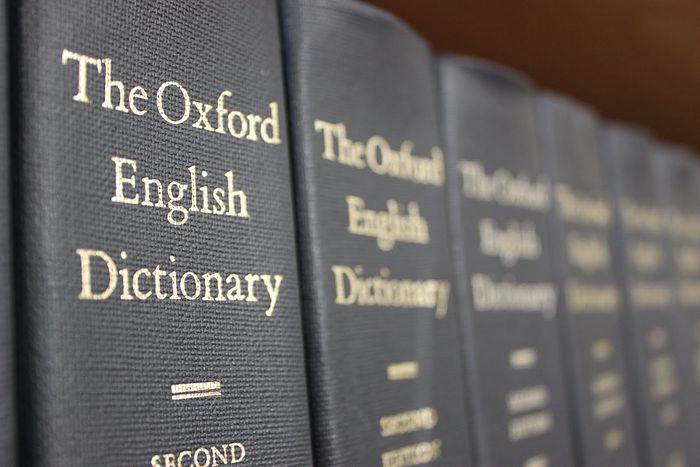
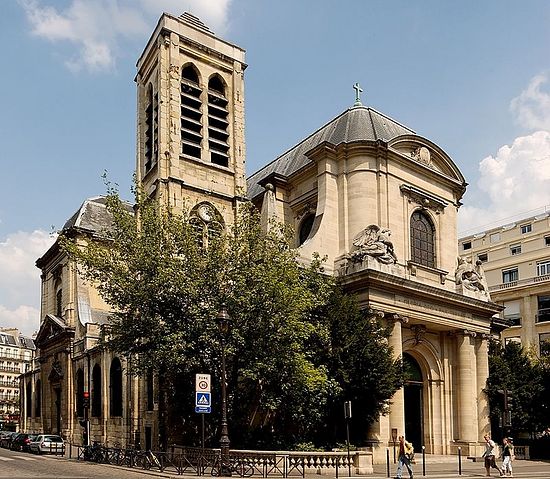
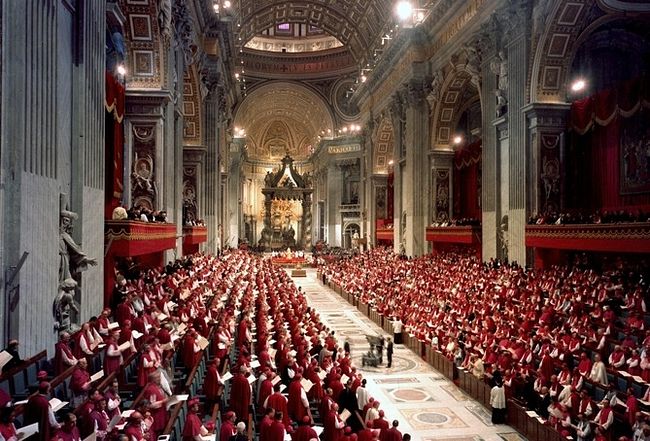
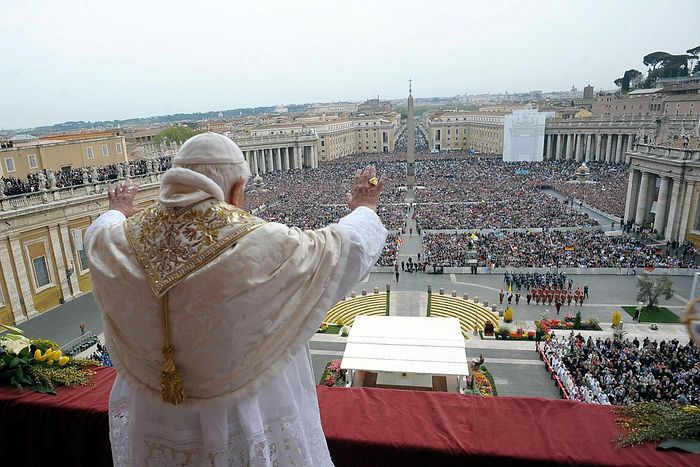
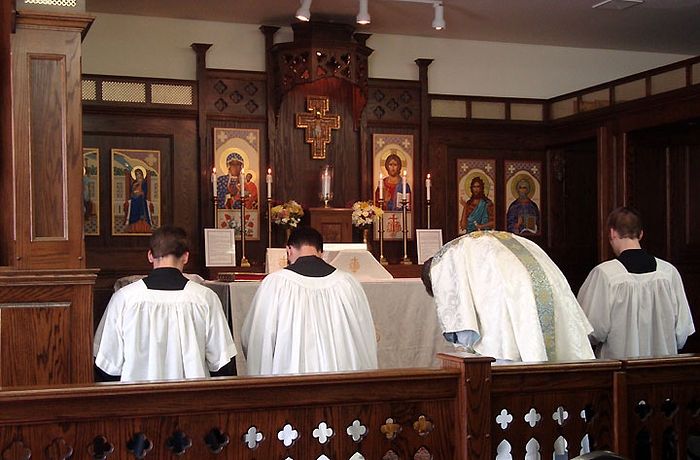
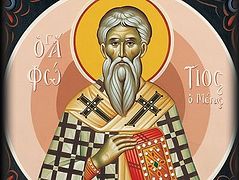
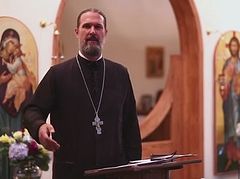
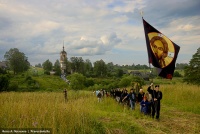
Is 22:22
I will give him the glory of David and he shall rule and no one will oppose him. And I will lay the key of the house of David upon his shoulder: and he shall open, and none shall shut: and he shall shut, and none shall open. And I will fasten him as a peg in a sure place
PM in Christ’s Kingdom
Matt 16:18
And I say to thee: That thou art Peter; and upon this rock I will build my church, and the gates of hell shall not prevail against it. And I will give to thee the keys of the kingdom of heaven. And whatsoever thou shalt bind upon earth, it shall be bound also in heaven: and whatsoever thou shalt loose upon earth, it shall be loosed also in Heaven
I am Orthodox, and I know RC theology very intimately.
We Orthodox are quite ignorant concerning the nuances of RC theology, and our 'knowledge' of history is far too heavily informed and influenced by reliance on error-riddled polemics of the 18th/19th centuries. We construct far too many straw men, and any Traditional Roman Catholic who knows their faith/theology will see them for what they are and consider orthodoxy to be substanceless. We must be honest and well informed - the actual truth is enough! No need to dress it up in exaggeration and falsehood.
What are the formalitys for a catholic wants to convert to Orthodox Christianity? Orthodox clergys have eny eccuminical agrement with rome? please guide me. And i need yours Prayer and Blessings.Thankyou Father
PROLOGUE
§01 The Basic Christian Catechism contains an outline of the essential Christian faith in 72 paragraphs and 12 chapters: Prologue, God, Creation, Human Beings, Mary - Mother of Jesus, Jesus Christ, The Church of Christ, The Law of God, Prayer, The Sacraments/Mysteries, Death and Eternal Life, and References. The sequence of the chapters follows the structure of the common Creed of Christendom, the Creed of Nicea-Constantinople, whose text can be found in paragraph two. The Catechism has the blessing of two Orthodox and Catholic bishops, and is available with illustrations on a single Internet scroll.
...
I'm sure it will help in your path to the Lord.
==================================
Another cradle Orthodox, I suppose.
A little more, and we'll be told to beware of Sts. Peter and Paul, who notoriously were not cradle Orthodox (as the rest of the Apostles).
Would you mind to inform us about what exactly is not correct, not Orthodox, in the Western Rite? A rite which most probably has its roots in St. Peter, codified by St. Gregory the Great and approved by one of the greatest saint of XX century.
A rite which half of Christendom used for a thousand years to worship God and commune with the Lord.
It's like claiming that the Old Rite of Holy Rus' is not correct. A rite used by St. Sergius of Radonetz and all the Russian saints until the reform of Patriarch Nikon.
Awake from your delusion, brethren.
Orthodox Christians can be sure of only one thing: they will have a stricter judgement. Cradle Orthodox will have the strictest!
You will see that among the hardline fundimentalist protestants, of which I used to be one, adultery is very uncommon, because a spouse knows that if he/she commits this evil he/she will loose his/her spouse, family, friends, and any and all respect or honor within the community.
I would never allow any daughter of mine to marry, say, an Italian because they think they should be able to live as drunken philanderers and get away with it and their wives forgive them indefinity.
If I were married and my spouse cheated on me, I would tell her that I forgive her and hope to see her in heaven, but until then I never want to see her face ever again.
I am fully aware of the ancient roots of the "western rite". But just because something is ancient does not make it correct. Yet another temptation for converts to Orthodoxy. The ancient rite fell out of practice in the early Church for a reason. Why did the Liturgy of St. John Chrysostomos become the universal Liturgy of the Church over time? Because it was through the Holy Spirit and not through man's desires. Let's remember that St. John's Liturgy is a "revision" or St. Basil's, and yet it is our standard. This is from God and not from man. The opposite seems true in our present case.
I suggest two things... make an in depth study of the history of Orthodox Liturgical Rites, and read the writings of holy people on the subject. They do exist. In addition, I believe Metropolitan Hierotheos Vlachos wrote something about this in true past few years. The "western rite" has yet to be universally accepted by the Orthodox Church (since it's resurgence) and it is doubtful that it will. But if God wills, then so be it.
Anthony is quite correct... let a convert be under the Petrachili of an authentic spiritual father for years first. Then things will become clearer. Too often we push our own will forgetting that this life is for our salvation, and that does not necessitate becoming a clergyman. Let God choose he priests.
=====================================
A very pious idiocy!
Those who perjured and betrayed the Tsar and murdered the Holy Imperial Martyrs a century ago were all cradle Orthodox, as much as those who afterward embarked in the most horrendous mass murdering ever witnessed in the history of world, destroying hundred thousands church and monastery at the same time.
Every Christian is a convert, nobody is born Christian!
Many have just the good pleasure of the Lord to be born in a Christian land and family and thus get a great help in their conversion by the Grace of the Sacraments and the examples of those around them, but all of them have to turn to Christ, to choose Christ, to convert.
All of them, all the time!
Therefore, the only difference is in the sincerity of our love for the Lord, a judgement which is very prudent to leave to the Lord Himself, Who alone knows the hearts.
We can judge only by the fruits, when they are known.
"Also, the so called "Wester rite", although used in a couple Orthodox jurisdictions, is quite a new phenomenon. There is a reason why this Liturgy died out of use in the early Church."
This is simply not true. The Western Rite Liturgy is very ancient. The West was fully Orthodox for hundreds of years, to throw out such tradition would be a very sad mistake for Orthodoxy.
I suggest you read this article: http://www.pravmir.com/what-do-we-make-of-the-western-rite/
'' A westerner who is baptised Orthodox will for many years be under the phronema of a spiritual father. Until then he cannot and must not try and teach cradle Orthodox who have Orthodoxy in their bones''
Did it? The issues of papal supremacy and the filioque were present very early on.
======================================
Of course, id did!
The issues were resolved by the Holy Spirit, and if someone continues to take issue about the matters he is under anathema and separated from the Church.
Father Victor says just that. There were five Patriarchates in the One Church, all believing in the same deposit of faith. Monophysites and all other heretics did not belong to the Church, Rome did, until the XI century (Frank and German tribes reciting the filioque sporadically notwithstanding, a thing strongly opposed by the Popes until 1014, by the way).
You doth protest too much for arguments you do not endorse.
Going for a master in theology, it's a very useful thing to remember:
1) the Lord's judgement about those possessing masters in theology at the time when He walked among men (and they did not go to Samaritans to get those masters!);
2) the only academy in Christianity is the monastic life;
3) there have been only 3 theologians in the whole history of the Church.
============================================
The Lord (not the verse) does not say that the Spirit would not proceed from Montano too.
So I guess you think we have misrepresented that spiritual idiot too.
“But when the Comforter is come, whom I will send unto you from the Father, even the Spirit of truth, which proceedeth from the Father, he shall testify of me.”
The Lord is as much clear as it's possible to be here.
The Holy Spirit proceeds FROM the Father THROUGH the Son!
No amount of cheap casuistry is going to change that.
Article seems heartfelt and the author's intentions are rightminded. We should pray that the whole world becomes Orthodox!
However, what is dangerous is that many of these en mass conversions to Orthodoxy fall victim to lack of proper catechism and reception into the Church I.e. through Holy Baptism. In addition, heterodox clergy are brought into the Church and made priests quite quickly. This is also quite dangerous in many cases and goes against the Tradition of the Church. All converts should learn to live an Orthodox Christian life first. If God wills, they will become clergy. I believe the Holy Fathers have said one should wait at least 5 years before considering such a bold step. All that aside, let us pray that more Christians from the Western confessions will embrace the true faith with humility and Let us receive hem with love and humility!
As much as it's quite impossible to be joined to the Church without repentance. Otherwise, in the best case, people will fall for the same delusion of those Jews silenced by the first Council in Jerusalem (all baggages must be left at the door before entering the Body of Christ!).
The worst case is spoken by the Lord in Matthew 12, 43-45.
"How could new dogmas be legitimately added to the Deposit of Faith once delivered to the saints (Jude 3) more than 1800 years after the birth of the Church?" I must say this was a profound example of misunderstanding. We may not agree with Rome's dogmatic assertions but they do not teach their views are "new dogmas" that are "added to the deposit of faith" and they would say their views were in the church for 1800 years before the definition in the same way that the dogmatic statements on the icons were in the church before Nicaea II.
"For a thousand years there was but One Church, comprised of five ancient Patriarchates, reciting the same Creed, believing in the same Deposit of Faith, and governed in a conciliar manner". Um...Monophysities, Docetists, Arians? Why the one thousand years if not to lend the impression there were no divisions?
Father says "With the Nicene Creed complete, the third Ecumenical Council that met in Ephesus in the year 431 forbade and anathematized any additions to the Nicene Creed. The entire Church, East and West, held the same Faith and recited the same Creed for centuries." Did it? The issues of papal supremacy and the filioque were present very early on.
More to come.
https://vimeo.com/224781349
Two key objections to Orthodoxy arise in evety single debate: contraception and divorce/remarriage. And frankly, Catholic apologists have a field day with these matters, because most Orthodox seem to consider them nonissues.
If you fail to address those pivotal traditional Catholic objections, they will just go on dwlling in the miserable penumbra and periphery of the Modern Roman Church. I guarantee you.
I have been a Catholic for 20 years, prior to which I was a Protestant minister. I hold graduate degrees in both theology and philosophy, and teach both for a college and for an archdiocese. Many of the things happening (and that have happened) in the Catholic Church are deeply troubling, but the truth is that Orthodox priests and apologists routinely misrepresent what the Catholic Church teaches and why it does so.
As attractive as the Orthodox Divine Liturgy is, the constant misrepresentations are a tremendous problem and obstacle to those of us who actually KNOW the Catholic faith, theology and history.
church-state singularity in Ireland that could imprison women in church run institutions and secretly murdered infants and raped children, "ends and means" extremism that "justified" Catholic open support of Fascism in Italy, Germany (you will notice that they did not kill Papists, but only the Lutheran thinker Dr. Bonhoffer), Croatian Ustasa, and Spain. I admit that some deluded Orthodox unified with fascism (the Romanian Iron Legion), but the Catholic collaboration with them was of a much larger scale, never mind that Hitler was a Catholic and WAS NEVER EXCOMMUNICATED.
Their plans are spelled out clear as day. They want to restore the Western Roman Empire ("Holy Roman Empire"), make us slaves to the Mediterranean, and take away our priests' right to marry.
If we, as Orthodox, cozy up with the papists, the murdered victims of the forth "crusaders", the Teutonic monsters, the Inquisition, and the 20th century Fascist criminals will curse us from beyond the grave.
The difference is that in the Church the problems NEVER become the canon, as will be the case even with the Cretan meeting and the bizarre itches of Istambul.
The Lord has spoken upon the matter, and the Scripture cannot be broken.